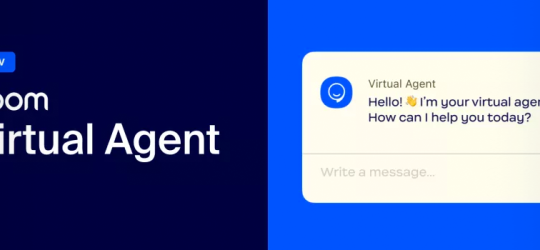Zoom Wants To Scale AI in Customer Service, Making Live Agents a Bigger Differentiator.

Last week Zoom announced their new AI-driven customer service initiative, part of their Zoom Contact Center product. This is a big deal precisely because it’s a big deal: Zoom has over 300 million active daily users, giving it an enormous leg up on customer awareness, access, familiarity and even favorability. Zoom’s value proposition is in setup ease. No complex coding, no extensive rules-based content strategy – the AI figures all of that out for customers. This makes the product potentially very appealing to businesses below the enterprise level, who can in theory add chatbot-based customer support even if they don’t have the dedicated IT resources of a billion-dollar company. Many will replace live agents, and many more will go straight to AI-support instead of ever having live agents.
And that is great for Zoom, as frictionless implementation is what will drive scale and their growth. And it’s great for consumers, as more of the brands they interact with will have improved customer service. And of course, it’s good for any individual business, because they can up their customer experience game relatively easily, right?
What happens though if Zoom is successful, and implementing AI-based customer service is easy and affordable enough for millions of businesses? Let’s play it forward with an example. Say you own a motorcycle and you want to buy a LED headlight conversion kit. You find the one you want and then need some help with installation and wiring. Where do you go? With an AI-based customer service tool that builds its content off of publicly available datasets instead of proprietary in-house data (which is what makes it so easy to implement in the first place), it turns out you may have quite a few choices:
- The headlight manufacturer could use Zoom’s AI to show customers how to wire the headlight into a specific brand and model of bike.
- The motorcycle manufacturer might have the same instructions, but just for its own bikes.
- The retailer that sold the headlight could easily provide the same information, to alleviate purchase anxiety and accelerate a sale.
- Motorcycle media, news and reviews sites might add the feature as well, to create stickiness and generate more page views and ad impressions, and as a value-add to advertisers like the LED headlight manufacturer.
- And half a dozen YouTube influencers who make a living reviewing and recommending products like this LED headlight might offer it as well.
When solutions are easy to scale, the value they add is easy to be captured by lots of different entities. This means that this value becomes commoditized, undifferentiated. It’s still worth something of course – customers receive a benefit regardless of the channel or entity that solves their problem. But if anyone can offer AI-based customer service, it ceases to be a unique facet of a brand’s customer experience, and is instead simply a new cost of doing business, the 21st-century equivalent of a 1-800 number or a FAQ page.
We absolutely agree that AI can transform customer service by providing new and scalable self-service paths for customers. We believe its value goes further than that however, and that it can be used to better inform and prepare live agents for the moments that matter, where a human voice is more important to the customer and more impactful in the brand experience. The more time your customers spend interacting with robots, the more memorable and unique those times they interact with real people will become.